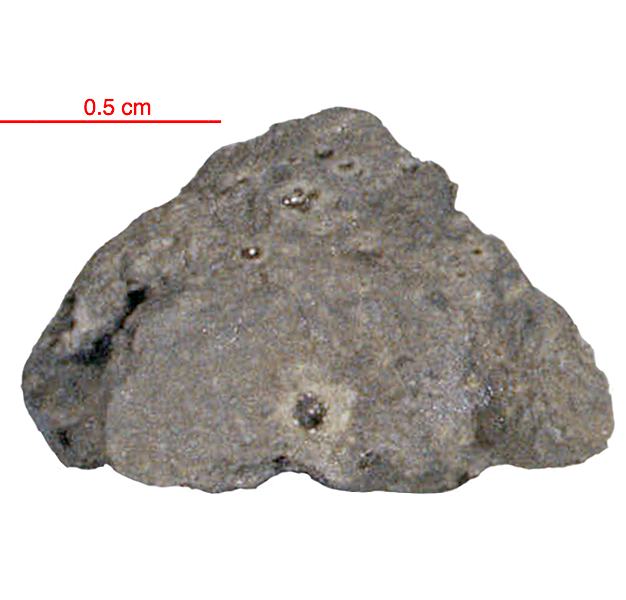
Fact sheet
15608 was collected by rake from the rim of Hadley Rille. It is a basalt with unusual texture interpreted as the result of rapid cooling at the edge of a lava flow. It consists of numerous skeletal pigeonite microphenocrysts in a finer-grained variolitic groundmass of pyroxene, plagioclase and opaque minerals. One edge of the particle is a beautiful example of “comb layering”. Fine parallel crystals of pyroxene project towards the edge (rotation 2). Beautiful radial clusters have formed around nucleation centres. There are clusters of olivine crystals in the centre (rotation 1).
The sample weighed 1.2 grams before analysis and has not been dated.
Further details of this and other Apollo samples are here: http://curator.jsc.nasa.gov/lunar/
The Apollo 15 landing site was in the Apennine Highlands, and close to Hadley Rille — a long, narrow winding valley. Approximately 76 kg of lunar material, including soil, rock, core-tube and deep-core samples, were returned to Earth.
This mission was the first flight of the Lunar Roving Vehicle which allowed the astronauts to venture further from the Lunar Module than in previous missions. During three periods of extravehicular activity, or EVA, on July 31st, and August 1st and 2nd, Scott and Irwin completed a record 18 hours, 37 minutes of exploration, travelling 17.5 miles, in the first car that humans had ever driven on the Moon.
Apollo 15 was launched on 26 July 1971.






